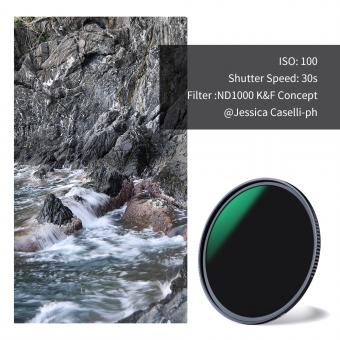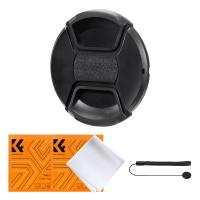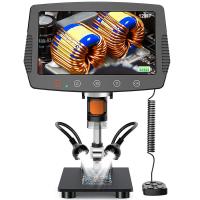What Do Filters Do On Lenses ?
Filters on lenses serve various purposes such as protecting the lens from scratches, reducing glare and reflections, enhancing colors, and achieving special effects. UV filters are commonly used to protect the lens from ultraviolet light and dust. Polarizing filters are used to reduce reflections and glare from non-metallic surfaces such as water and glass. Neutral density filters reduce the amount of light entering the lens, allowing for longer exposures or wider apertures in bright conditions. Color filters are used to enhance or modify the colors in a scene, while special effects filters such as star filters and soft focus filters create unique visual effects. Overall, filters are a useful tool for photographers to achieve their desired results and protect their lenses.
1、 Polarizing filters: reduce glare and increase color saturation.
Filters are an essential accessory for photographers and videographers. They are used to modify the light that enters the camera lens, which can have a significant impact on the final image or video. Filters come in different types, each with its unique function. One of the most popular types of filters is the polarizing filter.
Polarizing filters are designed to reduce glare and increase color saturation. They work by blocking certain light waves that cause reflections and glare, resulting in a clearer and more vibrant image. Polarizing filters are particularly useful when shooting outdoors, especially in bright sunlight or near water surfaces. They can help to eliminate reflections from water, glass, or other shiny surfaces, making it easier to capture the subject without any distractions.
In addition to reducing glare and increasing color saturation, polarizing filters can also enhance the contrast in the image. They can make the sky appear bluer, the clouds more defined, and the foliage greener. This effect is particularly noticeable when shooting landscapes or nature scenes.
The latest point of view on polarizing filters is that they are still a valuable tool for photographers and videographers. While some cameras and editing software can replicate the effect of a polarizing filter, the results are not always as good as using an actual filter. Moreover, polarizing filters can help to reduce the amount of post-processing required, saving time and effort.
In conclusion, polarizing filters are an essential accessory for any photographer or videographer. They can help to reduce glare, increase color saturation, and enhance the contrast in the image. While some cameras and software can replicate the effect of a polarizing filter, using an actual filter is still the best way to achieve the desired results.
2、 UV filters: protect the lens from ultraviolet light.
Filters are an essential accessory for any photographer who wants to capture high-quality images. They are designed to alter the light that enters the lens, which can have a significant impact on the final image. One of the most common types of filters is the UV filter, which is used to protect the lens from ultraviolet light.
UV filters are transparent filters that are placed on the front of the lens. They are designed to block ultraviolet light, which can cause haze and reduce the clarity of the image. UV filters are particularly useful when shooting in bright sunlight, as they can help to reduce the amount of glare and improve the overall contrast of the image.
In addition to their protective properties, UV filters are also used to enhance the color and sharpness of the image. They can help to reduce the bluish cast that is often present in outdoor photographs, and they can also help to improve the overall sharpness of the image.
However, there is some debate among photographers about the effectiveness of UV filters. Some argue that modern lenses are already designed to block UV light, and that adding a filter can actually reduce the quality of the image. Others argue that UV filters are still useful for protecting the lens from scratches and other damage.
Ultimately, the decision to use a UV filter will depend on the individual photographer and their specific needs. While they may not be necessary for every situation, they can be a useful tool for protecting the lens and improving the quality of the image.
3、 Neutral density filters: reduce the amount of light entering the lens.
Filters are an essential accessory for photographers and videographers. They are used to modify the light that enters the lens, which can have a significant impact on the final image or video. One of the most common types of filters is the neutral density filter.
Neutral density filters are designed to reduce the amount of light entering the lens without affecting the color or contrast of the image. They are particularly useful in bright conditions when the camera's shutter speed needs to be slowed down to achieve a desired effect, such as motion blur or shallow depth of field. By reducing the amount of light entering the lens, neutral density filters allow photographers to use slower shutter speeds without overexposing the image.
In recent years, neutral density filters have become increasingly popular among videographers. They are used to achieve a cinematic look by allowing for a slower shutter speed and wider aperture, which creates a shallow depth of field and a more cinematic feel. Neutral density filters are also used in drone photography and videography to reduce the amount of light entering the lens and prevent overexposure.
Overall, neutral density filters are an essential tool for photographers and videographers. They allow for greater creative control over the final image or video and are particularly useful in bright conditions when the camera's shutter speed needs to be slowed down. As technology continues to advance, it will be interesting to see how filters continue to evolve and impact the world of photography and videography.
4、 Color filters: alter the color balance of the image.
Filters are an essential accessory for photographers and videographers. They are used to modify the light that enters the lens, which can have a significant impact on the final image. Filters come in different types, each with its unique function. One of the most common types of filters is color filters.
Color filters are used to alter the color balance of the image. They work by selectively blocking certain colors of light while allowing others to pass through. This can be useful in a variety of situations, such as when shooting in different lighting conditions or when trying to create a specific mood or effect.
For example, a photographer might use a warm color filter to add a yellow or orange tint to an image, creating a more nostalgic or romantic feel. Alternatively, a cool color filter might be used to add a blue or green tint, creating a more calming or serene effect.
In recent years, there has been a growing trend towards using software-based filters, such as those found in popular photo editing apps. While these filters can be useful, they are not a replacement for physical filters. Physical filters offer greater control and precision, allowing photographers to achieve more nuanced and subtle effects.
In conclusion, color filters are an essential tool for photographers and videographers. They allow for greater control over the color balance of an image, enabling photographers to create a wide range of moods and effects. While software-based filters have their place, physical filters remain an essential accessory for any serious photographer.








































There are no comments for this blog.